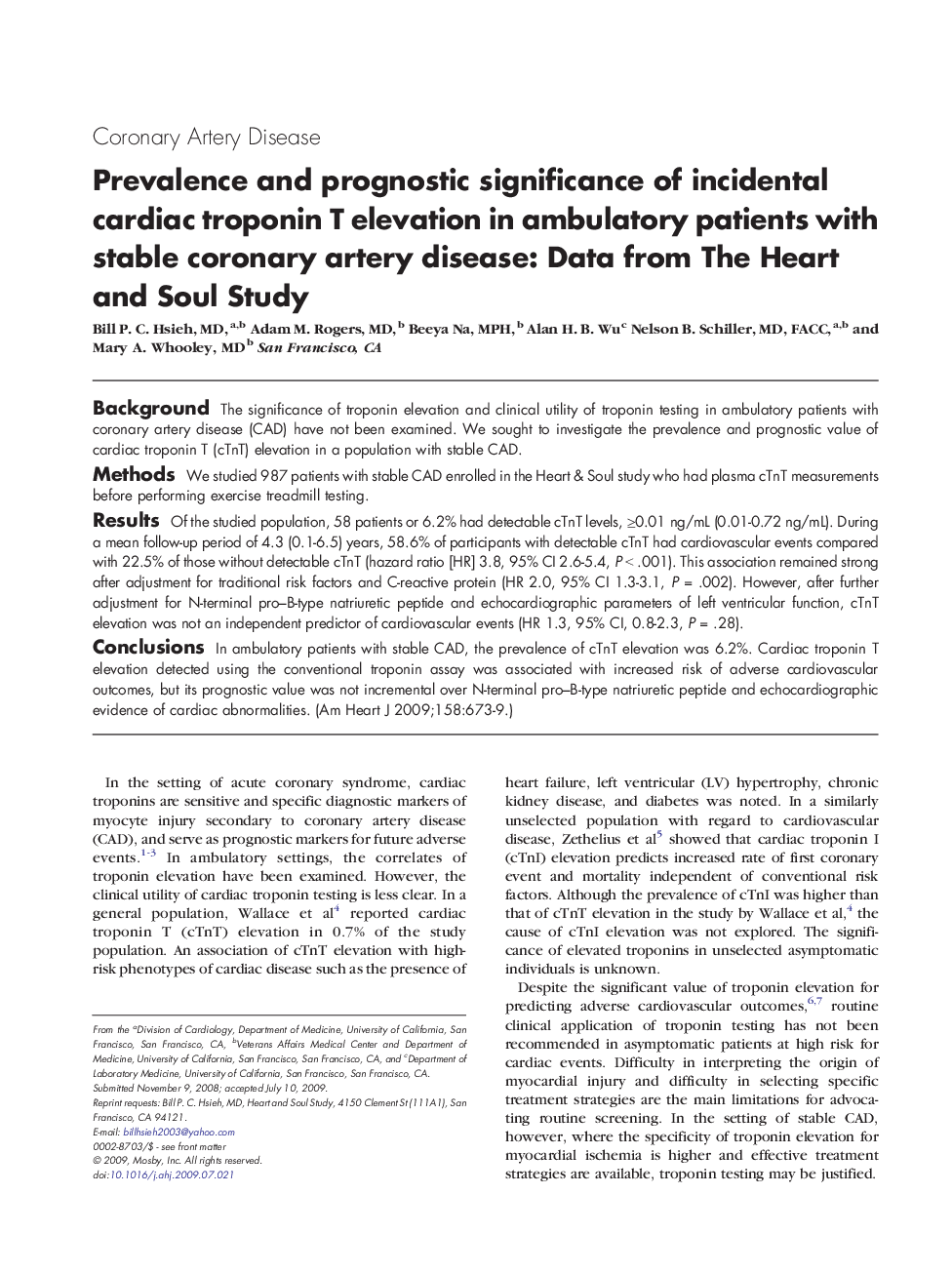| Article ID | Journal | Published Year | Pages | File Type |
|---|---|---|---|---|
| 2848965 | American Heart Journal | 2009 | 7 Pages |
BackgroundThe significance of troponin elevation and clinical utility of troponin testing in ambulatory patients with coronary artery disease (CAD) have not been examined. We sought to investigate the prevalence and prognostic value of cardiac troponin T (cTnT) elevation in a population with stable CAD.MethodsWe studied 987 patients with stable CAD enrolled in the Heart & Soul study who had plasma cTnT measurements before performing exercise treadmill testing.ResultsOf the studied population, 58 patients or 6.2% had detectable cTnT levels, ≥0.01 ng/mL (0.01-0.72 ng/mL). During a mean follow-up period of 4.3 (0.1-6.5) years, 58.6% of participants with detectable cTnT had cardiovascular events compared with 22.5% of those without detectable cTnT (hazard ratio [HR] 3.8, 95% CI 2.6-5.4, P < .001). This association remained strong after adjustment for traditional risk factors and C-reactive protein (HR 2.0, 95% CI 1.3-3.1, P = .002). However, after further adjustment for N-terminal pro–B-type natriuretic peptide and echocardiographic parameters of left ventricular function, cTnT elevation was not an independent predictor of cardiovascular events (HR 1.3, 95% CI, 0.8-2.3, P = .28).ConclusionsIn ambulatory patients with stable CAD, the prevalence of cTnT elevation was 6.2%. Cardiac troponin T elevation detected using the conventional troponin assay was associated with increased risk of adverse cardiovascular outcomes, but its prognostic value was not incremental over N-terminal pro–B-type natriuretic peptide and echocardiographic evidence of cardiac abnormalities.
